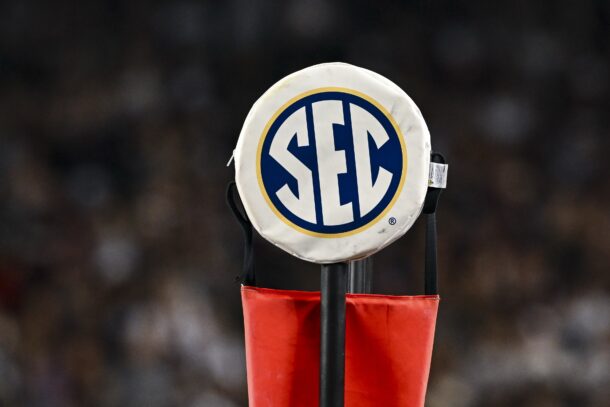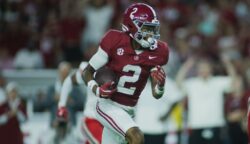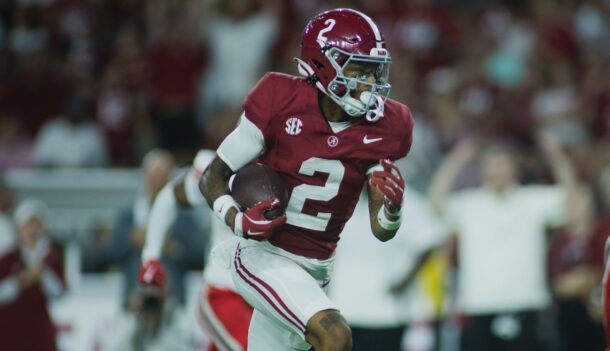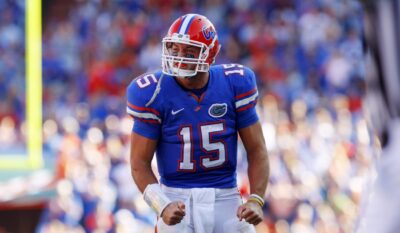
The beauty of college football is that outside of a few head coaches, nobody stays around for long.
With the exception of a few players who exhaust every year of eligibility, the sport is a continuous conveyor belt of next-man-up after stars leave for the NFL or graduate. Every season there’s a new face on the marquee as the next big thing.
While some programs excel at roster continuity and coaching stability, others have plenty of holes to fill in 2021. With that, these people (coaches, players, administrators) will be the most important additions for each SEC team this season:
Alabama — Bill O’Brien, OC
When you’re a program as rich in talent at every position as Alabama is, it’s extremely difficult to be an instant-impact type player your first year in Tuscaloosa. Fortunately for this article’s purpose, Nick Saban changes offensive coordinators quicker than Tennessee fans can run coaching candidates out of town. O’Brien is the latest man to take the reins of the Tide offense, and while Alabama is deep at all 11 positions, the Tides’ offense must find a way to replace 5 first-round draft picks.
The biggest change fans will see in 2021 is likely to be less 3- and 4-receiver sets than when Steve Sarkisian was in charge. Instead O’Brien will probably deploy more 12-personnel with the talented tight end duo of Jahleel Billingsley and Cameron Latu, the latter of which caught 4 touchdown passes from Bryce Young in Alabama’s 3 spring practices.
For as much as people may want to make fun of the hire, O’Brien likely had several NFL suitors and opted for Saban’s empire. The former Texans head coach needs this stop to be as successful as Tide fans are hoping for so that the 51-year-old can return to the head-coaching ranks.
Arkansas — Jaquayln Crawford, WR
The Razorbacks certainly have a healthy margin for improvement from 2020, but they actually return a fair amount of talent. Replacing Feleipe Franks is a big hole, but there’s a lot of optimism surround KJ Jefferson, especially after a strong spring game.
The Hogs, however, were dealt a pretty big blow in April when wide receiver Mike Woods transferred to Oklahoma. Woods had 32 receptions for 619 yards and 5 touchdowns last season, and his 19.3 yards per catch led the team. That leaves a sizable hole to fill as Jefferson’s second option, behind Treylon Burks who will warrant the lion’s share of defensive attention.
Crawford is a speedy redshirt junior who sat out 2020 but practiced with the team following his transfer from Oklahoma. Crawford caught 3 passes for 23 yards in the Red-White Game and had a 70-yard touchdown catch called back for a touch sack.
Auburn — Bryan Harsin, HC
Stop if you’ve heard this before, but success in Year 1 for Harsin depends on the leap junior Bo Nix can make (literally) under center. Harsin will have help from OC Mike Bobo as well, but Harsin’s fingerprints on the offense should be pretty apparent as the Tigers shift away from Gus Malzahn’s offensive scheme.
Almost as important as his influence on the field, Harsin’s ability to recruit off it and upgrade Auburn’s reputation as a middle-of-the-pack SEC program is essential. The reviews from springs have been positive, but things get challenging real quick this year for Auburn with trips to Penn State and LSU in the first 5 weeks. Hopefully, he keeps the trains on the track.
Florida — Demarkcus Bowman, RB
Heisman finalist Kyle Trask? Gone. Generational freak Kyle Pitts? Let NFL teams worry about him now. Versatile playmaker Kadarius Toney? Nice knowing you.
Dan Mullen certainly has a tall order in trying to keep pace with his blistering offense from 2020, not to mention repeating in the East will be no picnic. Emory Jones should be a solid replacement for Trask, but what sort of weapons will he have to work with?
Bowman is a Clemson transfer and former 5-star recruit from nearby Lakeland (Fla). He enters a crowded running back room with sophomore Nay‘Quan Wright, senior Malik Davis, but I like Bowman to win the job as the workhorse back. The Gators are going to be a run-first team this season with the dual-threat ability of Jones. Bowman has elite speed, and Wright and Davis may be used more in the passing game. You may not be familiar with his name now, but he will be a prolific back come season’s end.
Georgia — Tykee Smith, Star
Whenever Kirby Smart runs your program, there’s always going to be a strong defense. Last year’s Bulldogs were among the 5 best in the country in terms of total yards and points allowed, even with prolific seasons from Kyle Trask and Mac Jones.
The Bulldogs perennially have one of the best front sevens, but this year’s secondary leaves a little something to be desired. Gone are players like DJ Daniel, Eric Stokes, Richard LeCounte, Mark Webb, Tyson Campbell and Tyrique Stevenson, and in their place are a whole lot of untested players who have yet to validate their recruiting ranking.
Enter Smith, who transfers from West Virginia along with the former Mountaineers defensive backs coach Jahmile Addae. Smith was one of the best defensive backs in the Big 12 last year, and while Christopher Smith and Lewis Cine work up to speed, Smith will be a welcomed veteran presence.
Kentucky — Liam Coen, OC
How does one modernize an offense cut from a time before the forward pass was invented? Poach someone from the Sean McVay coaching tree.
There’s not much direction but up after Kentucky ranked last in the SEC with 122 yards passing per game, last in total yardage (318 yards) and 11th in total scoring. Much of Coen’s success is tethered to that of Kentucky’s starting quarterback in 2021. Penn State transfer Will Levis, who has 3 years of eligibility remaining, is the lead dog to start, but Joey Gatewood and Beau Allen will also be seriously involved in the competition. Levis and Gatewood aren’t afraid to run the ball, but they’ll also have maybe the best running back in the SEC (apologies Tank Bigsby) in Chris Rodriguez and new Nebraska-transfer Wan’Dale Robinson as weapons to use in Coen’s offense.
LSU — Daronte Jones, DC
The Tigers’ precipitous fall from 2019 national champion to a .500 team in 2020 can be placed squarely on the backs of its porous defense. Jones was hired to be the panacea of all of LSU defensive problems — along with another top recruiting class and a healthy Derek Stingley Jr.
The bad thing about winning a national championship is that many of the players are likely to go pro, as was the case with LSU. What in the short term is a negative eventually turns into a positive. All of the young players thrust into starting roles last year without a spring to prepare now have 10 games of experience.
Jones was previously the defensive backs coach with the Minnesota Vikings, and if he can find a way for his defense to reduce the amount of explosive plays they allowed in 2020 and build on the roster continuity, the biggest question mark on this team may flip to whoever is under center. (Though LSU fans should feel very comfortable with Max Johnson or Myles Brennan.)
Mississippi State — Jack Abraham, QB
Ironically for as much as an offensive wizard as Mike Leach is, the defense is the surest unit of this team.
With running back Kylin Hill gone and incumbent QB Will Rogers still finding his way, if the Bulldogs are to capture some of that 2020 Week 1 magic, it will have to come from a surprise upgrade at the quarterback position.
Abraham had decent success at Southern Miss before transferring this offseason. He was a preseason All-Conference USA first-team selection entering 2020 following his 2019 season in which he threw for 3,496 yards and 19 touchdowns. He ultimately opted out of last season after sustaining a concussion in October, but he put Rogers on notice this spring, throwing for 162 yards and 2 touchdowns on 23-of-34 passing in the Maroon-White game. Perhaps the Pirate has his new first mate.
Missouri — Mookie Cooper, WR
The best way to help a developing Connor Bazelak is to surround him with as many weapons as possible, and Cooper fits that criteria. The former Ohio State Buckeye and St. Louis native brings 4 years of eligibility and plenty of speed and shiftiness to go alongside Tauskie Dove, Jalen Knox and Keke Chism.
The former 4-star recruit may take a few weeks to crack the starting lineup in the slot position, but he should have an immediate impact in Missouri’s return game and will likely even be a threat out of the backfield. If Bazelak is able to cut down on a few of his mistakes from 2020 and Eli Drinkwitz removes the training wheels, Missouri’s offense should be pretty entertaining to watch this year.
Ole Miss — Isaiah Iton, Jamond Gordon and Tywone Malone, DL
Lane Kiffin and Ole Miss’ offense is a thing of beauty when operating at its best. Factor in that the Rebels have the best returning quarterback in the SEC in Matt Corral, and 2021 should be nearly as exciting.
But that defense was a different story, particularly the line. That group couldn’t produce pressure (1.6 sacks per game ranked 10th in the SEC), which exposed the secondary. They also failed to stop the run, ranking last in the SEC with 206.9 yards allowed per game on the ground.
Kiffin and defensive coordinators DJ Durkin and Chris Partridge hope to address that issue with a trio of signings on the line. Malone is a 6-4, 300-pound defensive tackle and the No. 62 overall prospect in the Class of 2021, the highest-rated prospect to sign with the Rebels under Kiffin. Iton and Gordon were JUCO standouts. A consistent pass rush and an ability to offer any sort of impediment to the run game will go a long way in determining Ole Miss’ success in 2021.
South Carolina — Marcus Satterfield, OC
Only because I think South Carolina’s defense under Clayton White is more of a project than the offense is Satterfield the choice to have the biggest impact as a new addition. Gamecocks fans will hope some of Joe Brady’s genius rubbed off on Satterfield last year in Carolina.
The new OC has some tools to work with. Kevin Harris seems like a lock for 1,000 yards rushing, particularly behind one of the more experienced, if not better offensive lines in the SEC. While Luke Doty may not have the highest ceiling, at least he has starting reps.
Who Doty throws to, however, is an open question. It will be up to Satterfield and Shane Beamer to develop a scheme that can ease some of these flaws as the Gamecocks work to find a dependable receiving option that can stay healthy. Look for plenty of ground game and short passes early in the season as South Carolina attempts to work itself out of the bottom of the SEC’s offensive rankings.
Tennessee — Danny White, AD
For the mere prayer that White can just bring much-needed stability to Rocky Top, he is the most important addition.
The Volunteers have been emaciated by the transfer portal. There’s once again a new head coach. And, publicly anyway, the quarterback competition seems to be a dead heat between 5 players (Brian Maurer, Harrison Bailey, Hendon Hooker, Kaidon Salter and Joe Mixon).
Goodness.
Fortunately, Josh Heupel brings an excellent offensive résumé with him to Knoxville and has a fair amount of playmakers to work with. The transformation of the program won’t be immediate, so long as White can practice patience, the Volunteers should have better days ahead.
Texas A&M — Jahmir Johnson, OT
Speaking of Tennessee defectors, Johnson comes to College Station at the perfect time.
In 2020 the Aggies had one of the best offensive lines in the country, allowing just 7 sacks all season and opening up running lanes for the second-best rushing attack in the SEC. But when 4 of the 5 starters leave for the NFL, there is going to be an inevitable dropoff.
Johnson is a 6-5, 300-pound lineman playing for his 4th school, after making 17 starts for the Volunteers. The Aggies signed 6 offensive linemen this past recruiting cycle, and with new QB Haynes King taking over for Kellen Mond, having time in the pocket is a must.
Vanderbilt — Barton Simmons, GM
To avoid picking another new head coach, we’ll go off the board with Simmons. To state it plainly, Vanderbilt is never going to out-recruit the likes of Alabama, LSU and Georgia, so the Commodores have to get creative, which is why the Simmons hire is so smart.
Maybe it’s just because he’s a fellow media brethren, but hiring a recruiting analyst from a media company to help run your football program is an idea that’s just so absurd, it may work. The Commodores have never signed a 5-star recruit in the modern recruiting era (since 2000), so it’s all about finding the diamonds in the ruff, made even more challenging given the school’s academic standards.
No one is expecting much from Clark Lea in Year 1, but if he and Simmons are able to recruit the right type of players to fit their system and return to the heights of the James Franklin era, the stars will follow.







